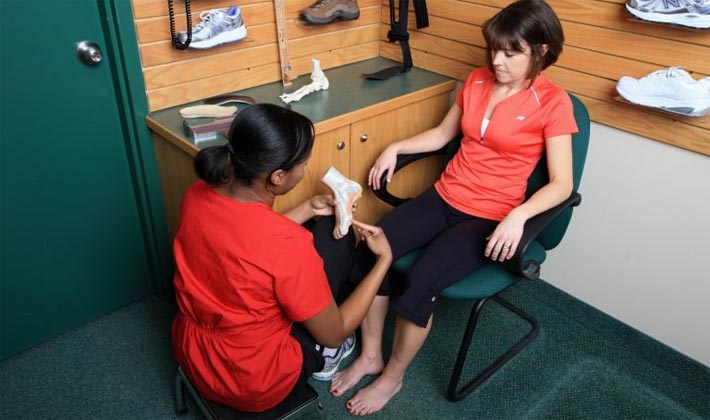
Pedorthic assessments are one of the most important aspects of my work and a considerable portion of my weekly clinic time is devoted to them. Many patients come to my clinic with persistent and unexplained foot, ankle, knee, hip or back pain. A complete and thorough pedorthic assessment enables me to determine if the pain they are experiencing is related to poor foot structure or biomechanics. At the end of the assessment, I am able to clearly explain their medical condition to them and to recommend an individualized treatment plan that addresses the causes of, and contributing factors to, their condition rather than just the symptoms.
All Canadian Certified Pedorthists conduct similar assessments; we evaluate your lower limb anatomy, muscle and joint function, as well as the interaction of your feet and lower limbs with the rest of your body. If you have an upcoming pedorthic assessment or are trying to determine if you should schedule one, here is what you can expect:
What to bring:
On the day of your assessment, dress in loose clothing or shorts so your Pedorthist can easily examine your feet and lower limbs and wear, or bring, your everyday footwear with you. Walking or running shoes are ideal. Make sure the footwear you bring is well worn as your Pedorthist will look closely at the wear pattern at the top, bottom and insole inside of your shoes as part of the assessment. If your assessment was booked following a referral from your physician, also bring the prescription your physician provided.
What to expect:
A pedorthic assessment typically takes between 30 and 60 minutes. Your Pedorthist will begin by taking a thorough history to identify patterns and expose causes of your pain. Questions will probe:
- Symptoms
- Previous injuries
- Family history
- Systemic diseases
- Lifestyle and activities
- Occupation
- Footwear
Following the history, your Pedorthist will perform a series of weight bearing and non-weight bearing tests including:
- Testing the joint range of motion in your feet and ankles to make sure that each joint moves in its full range
- Testing the strength of certain muscles
- Checking to see the type of foot you have: normal, flat or high arched
- Identifying any boney prominences, swelling, discolouration
- Examining the alignment of your knees and lower back
- Analyzing how you walk and run particularly the position of your foot at each phase of the step
Treatment:
Your Pedorthist will analyze the findings of each aspect of the assessment and will recommend a treatment plan to address your condition. Depending on what your assessment reveals, your treatment may include:
- Custom-made or over-the-counter foot orthotics
- Stretching and strengthening exercises
- Different style or brand of footwear or possibly modifications to new or existing footwear
- Ice therapy
- A recommendation to consult with another healthcare professional such as a physiotherapist, chiropractor or a massage therapist
Like all pedorthic treatment plans, your individualized plan will be designed to help alleviate pain, improve your mobility and enhance your quality of life.
If you are experiencing pain in your feet or lower limbs don’t ignore it or assume it is something you have to live with. A pedorthic assessment will provide you with valuable insight into its cause as well as a plan to address it. To schedule a pedorthic assessment you can either contact a Canadian Certified Pedorthist in your community directly or ask your healthcare practitioner for a referral.
By Steve Stredulinsky, C. Ped (C), Edmonton, AB
